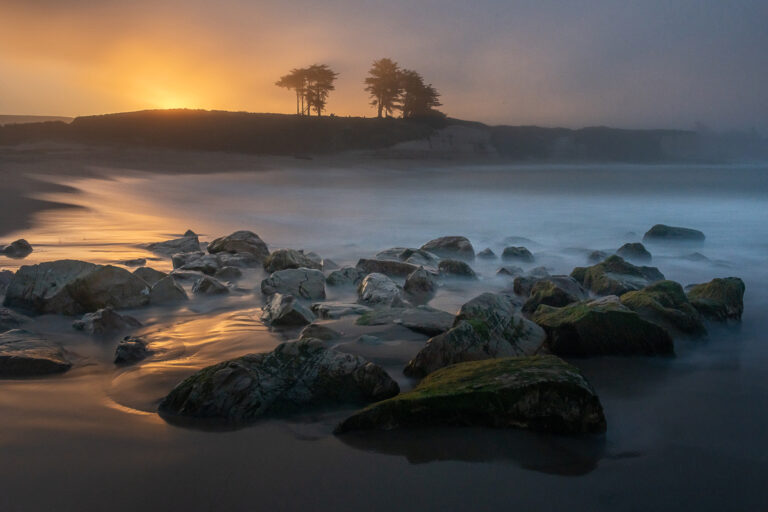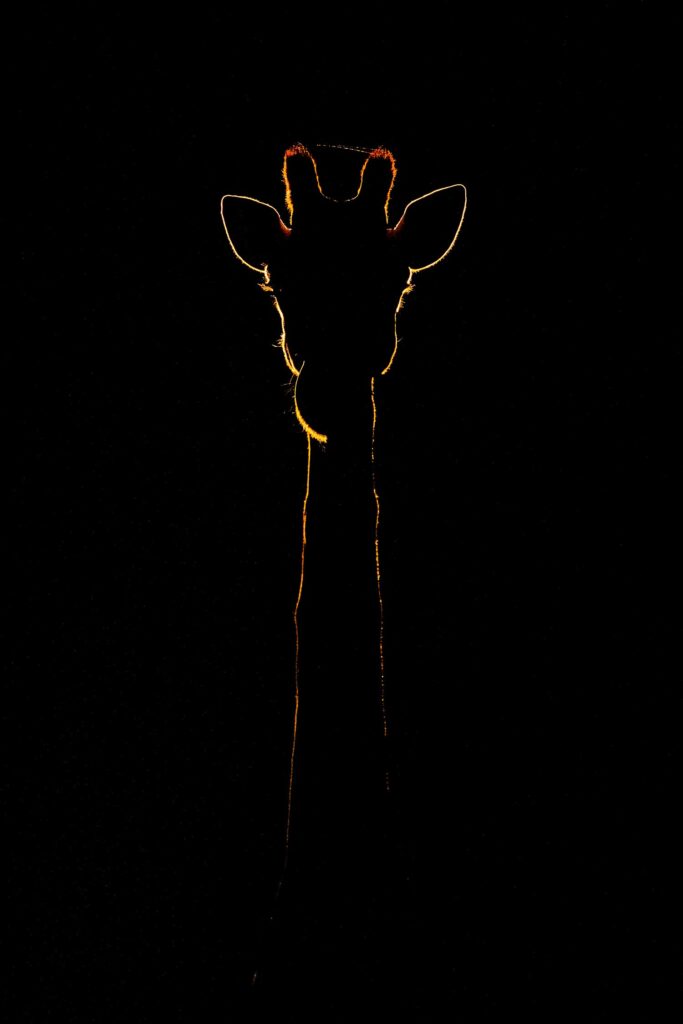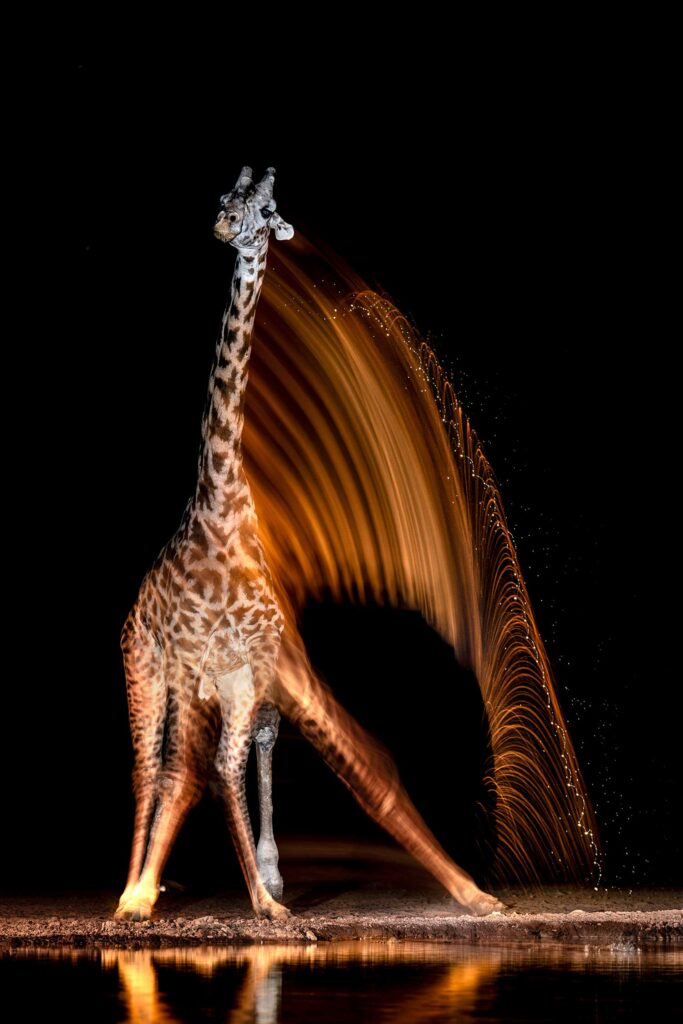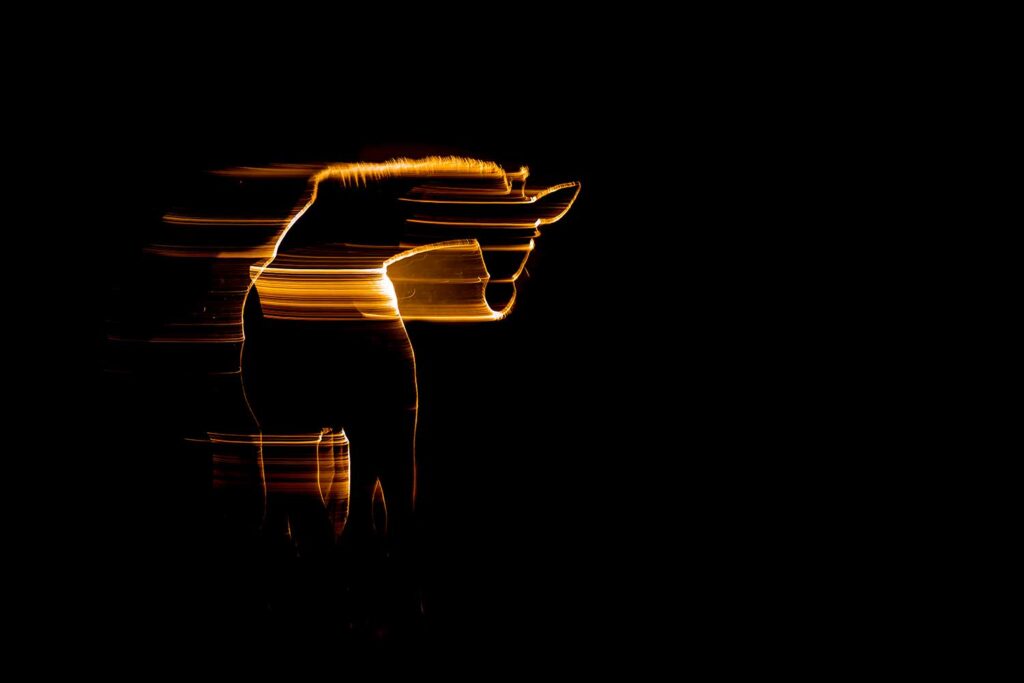
Share
↑ Solio Game Reserve, Kenya An artificial light source mounted on my vehicle backlit male giraffes investigating a female in estrus.
Words and Images by Gurcharan Roopra | April 2025
As nature photographers, it’s easy to fall into repetitive behaviors. You might tell yourself that you can only take nature photos somewhere exotic, rather than your backyard. You might visit the same favorite spots repeatedly. Or fall in love with one subject and focus on it to the exclusion of other natural subjects.
As the photo ambassador of Solio Game Reserve in Kenya, I have become quite familiar with the area’s wildlife and scenery. Over time, I realized I had hit a creative wall. I was capturing the same types of nature photos, relying on familiar angles and compositions.
I wanted to break free from routine and push my photography in a new direction. To do this, I began experimenting with perspective — imagining myself as an ant, a bird, or even a predator, trying to see the world from fresh viewpoints.
While this approach added variety to my work, it still wasn’t enough. I needed something bigger — something that would truly challenge the way I photographed these familiar subjects. The secret was to think differently about lighting.
I got permission to go on a night drive at Solio, and I was all set for my trip. I had my camera ready, and I had the lighting planned out.
On the first night, I found a group of relaxed giraffes. I aimed my camera, but it was a bit tricky. In the darkness, the focus kept moving around, and it wouldn’t lock onto my subject.
My camera didn’t know where to focus. The subject was dark, and only a halo of orange light was showing, which was beautiful. I wanted to capture what I was seeing, even though my camera struggled. I tried changing the focus mode from 3D to single point, and finally, I found a working focus point on the lovely backlit head and neck of a single giraffe.

There is a hide in Shompole Conservancy, but nighttime photography can be tricky. High ISO settings don’t always work well, and the shutter speed needs to be fast enough to freeze the action. I tried slower speeds at first, but I realized that staying in an overnight hide gave me some unexpected advantages. It made me think more about the environment and how important it was to use it to my advantage.
I tried using In-Camera Movement (ICM), but it didn’t work very well. On my next night, I was more prepared. I set up my off-camera flash on a gimbal, added a honeycomb and barn door attachment to stop the light from spreading out too much, and then I put my camera on a beanbag and waited patiently for the perfect moment to present itself.
I had a specific idea in mind. I wanted to freeze the giraffe at the end of the shutter. So, I changed the flash to fire at the end of the curtain, reduced the shutter speed to under a second, and voila! The first giraffe that came in gave me this amazing shot. I was so lucky, and getting a unique shot was highly rewarding.

Sometimes, even the best plans can go awry, and improvisation can birth creativity. I was working with rhinos at Solio Game Reserve, and guess what? The cold weather made them seek shelter in the thicket to stay warm. The warmth seemed to attract giraffes, as well, and I have a special fondness for them. Their long necks, beautiful patterns, a walk some might say is awkward, but I find elegant, bring potential for incredible photos in the right conditions.
As usual, I started working on getting a good shot. I made sure the conditions and settings were perfect, but the shots still felt the same — “safe,” “typical.” I was about to give up when I decided to try something different. I slowed down the shutter speed to 1/3 of a second and added some backlight. To my surprise, I was able to get a unique shot!

Knowing the camera settings, having the best equipment, and positioning yourself perfectly are all important, but what really makes a great shot? It all comes down to that feeling of wanting to explore and push your limits. With practice, you’ll get better and better, and you’ll start to crave more challenging shots. I’m lucky enough to live near Nairobi National Park. I can go there every weekend, which means I have a lot of opportunities to practice and shoot. But, shooting at the same place regularly can become repetitive, so I try to challenge myself to make unique images by playing with angles, lighting and camera settings.
See more of Gurcharan Roopra’s work at gurcharanroopra.com.
Get Annual Subscription